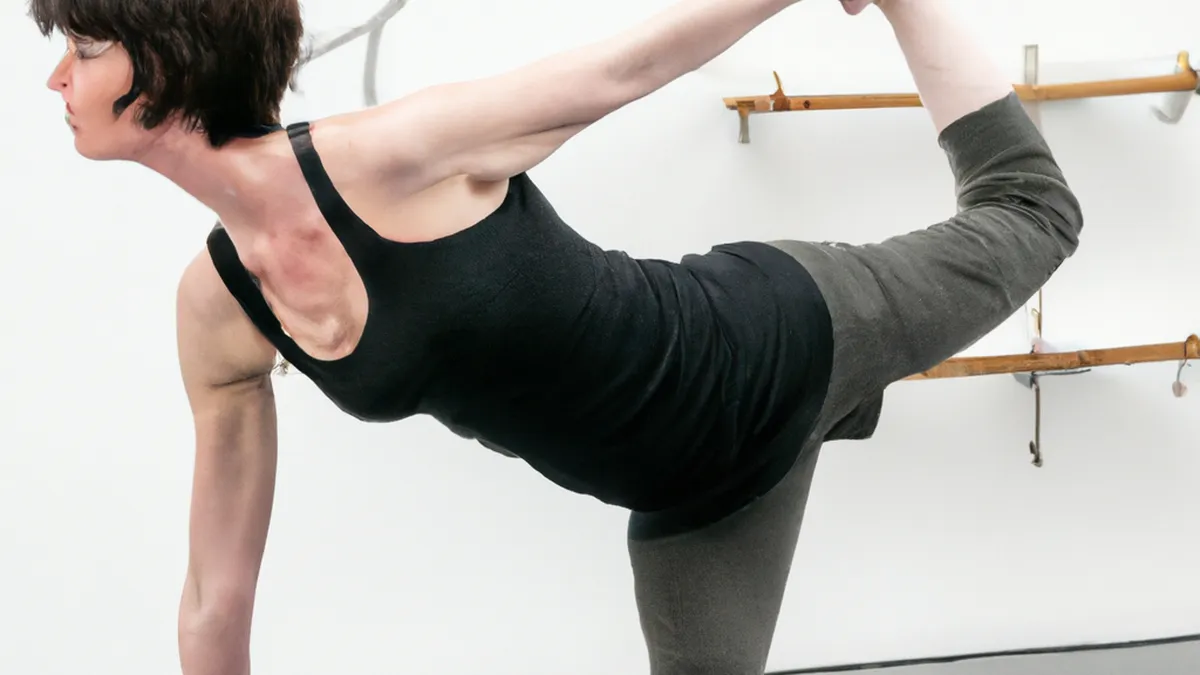Rebalance Your Spine with Pilates
Pilates for Spinal Alignment: A Path to Better PosturePilates focuses on strength, flexibility, and core stability. Its primary benefit is spinal alignment. Proper spinal alignment supports overall health. It alleviates pain, improves posture, and enhances physical performance. This post explores how Pilates helps achieve better spinal alignment.
Understanding Spinal Alignment
Spinal alignment means proper spine positioning. The spine should maintain its natural curves. These curves distribute weight evenly and provide balance. Misalignment can lead to back pain, tension, and headaches.Pilates exercises target spinal-supporting muscles. Strengthening these muscles improves alignment. This approach enhances posture and boosts overall physical health.
Tips for Practicing Pilates for Spinal Alignment
As an Amazon Associate I earn from qualifying purchases.
Gear tip: consider foam yoga wedge, yoga mat, and yoga bolster to support this topic.
Maximize Pilates benefits for spinal alignment with these tips:
1. Focus on Core Strength
Core muscles play a vital role in spinal alignment. Prioritize exercises that strengthen them. Engage your abdominals during every movement. This engagement stabilizes your spine.For example, the “Hundred” exercise activates your core. It strengthens abs and back muscles. Consequently, your spine aligns better during daily activities.
2. Practice Mindful Breathing
Breathing enhances movement and supports spinal alignment. Use deep, controlled breaths to engage your core. Inhale before a movement and exhale during it. This technique maintains focus and stability.Mindful breathing also reduces tension. Deep breaths relax your muscles. Relaxation improves alignment and reduces discomfort.
3. Incorporate Specific Exercises
Choose exercises targeting spinal alignment. Movements like the “Cat-Cow” and “Spine Stretch” work well. The Cat-Cow improves spinal flexibility and alignment. The Spine Stretch elongates the back and enhances posture.Also, include the “Roll Up” in your routine. This exercise strengthens abdominal muscles and gently stretches the spine. Incorporating these movements helps achieve a more aligned spine.
Advice for Effective Pilates Practice
To maximize your Pilates practice, consider this advice:
1. Work with a Qualified Instructor
A certified Pilates instructor enhances your practice. They provide personalized feedback on your form. This feedback ensures proper alignment and helps modify exercises for your needs.
2. Use Props Wisely
Props like foam rollers or resistance bands enhance Pilates practice. They provide support and promote better alignment. For example, placing a foam roller under your spine raises alignment awareness. This encourages muscle engagement during exercises.
3. Be Consistent
Consistency is essential for any fitness routine. Practice Pilates regularly to improve spinal alignment. Aim for two to three sessions weekly. Over time, you will notice increased strength, flexibility, and improved posture.
Benefits of Pilates for Spinal Alignment
Practicing Pilates for spinal alignment offers many benefits. Here are some notable advantages:
1. Improved Posture
Pilates significantly improves posture. Strong core muscles support the spine, leading to better alignment. As a result, you stand taller and feel more confident.
2. Reduced Pain
Many experience back pain from poor spinal alignment. Pilates alleviates this pain by strengthening spinal muscles. With consistent practice, you may notice decreased discomfort.
3. Enhanced Flexibility
Pilates promotes flexibility, essential for spinal health. Increased flexibility allows for a greater range of motion. This improvement prevents injuries and reduces stiffness.
4. Better Body Awareness
Pilates encourages mindfulness and body awareness. You become more attuned to your body’s movements and alignment. This awareness translates to better posture in daily life.
Conclusion
Pilates offers a powerful tool for achieving spinal alignment. Focus on core strength, mindful breathing, and specific exercises to improve posture and overall health. Additionally, work with a qualified instructor and practice consistently for the best results. Embrace Pilates benefits and take steps toward a healthier, more aligned spine. Start your journey today and experience positive changes in your life!
Below are related products based on this post:
FAQ
What is spinal alignment?
Spinal alignment refers to the proper positioning of the spine, which should maintain its natural curves. These curves help distribute weight evenly and provide balance. Misalignment can lead to issues such as back pain, tension, and headaches.
How does Pilates improve spinal alignment?
Pilates improves spinal alignment by targeting and strengthening the muscles that support the spine. By focusing on core strength, mindful breathing, and specific exercises, practitioners can enhance their posture and overall physical health. Consistent practice leads to noticeable improvements in alignment and comfort.
What are some effective Pilates exercises for spinal alignment?
Effective Pilates exercises for spinal alignment include the “Cat-Cow,” “Spine Stretch,” and “Roll Up.” These movements help improve spinal flexibility, strengthen abdominal muscles, and enhance posture. Incorporating these exercises into your routine can lead to a more aligned spine.















Post Comment